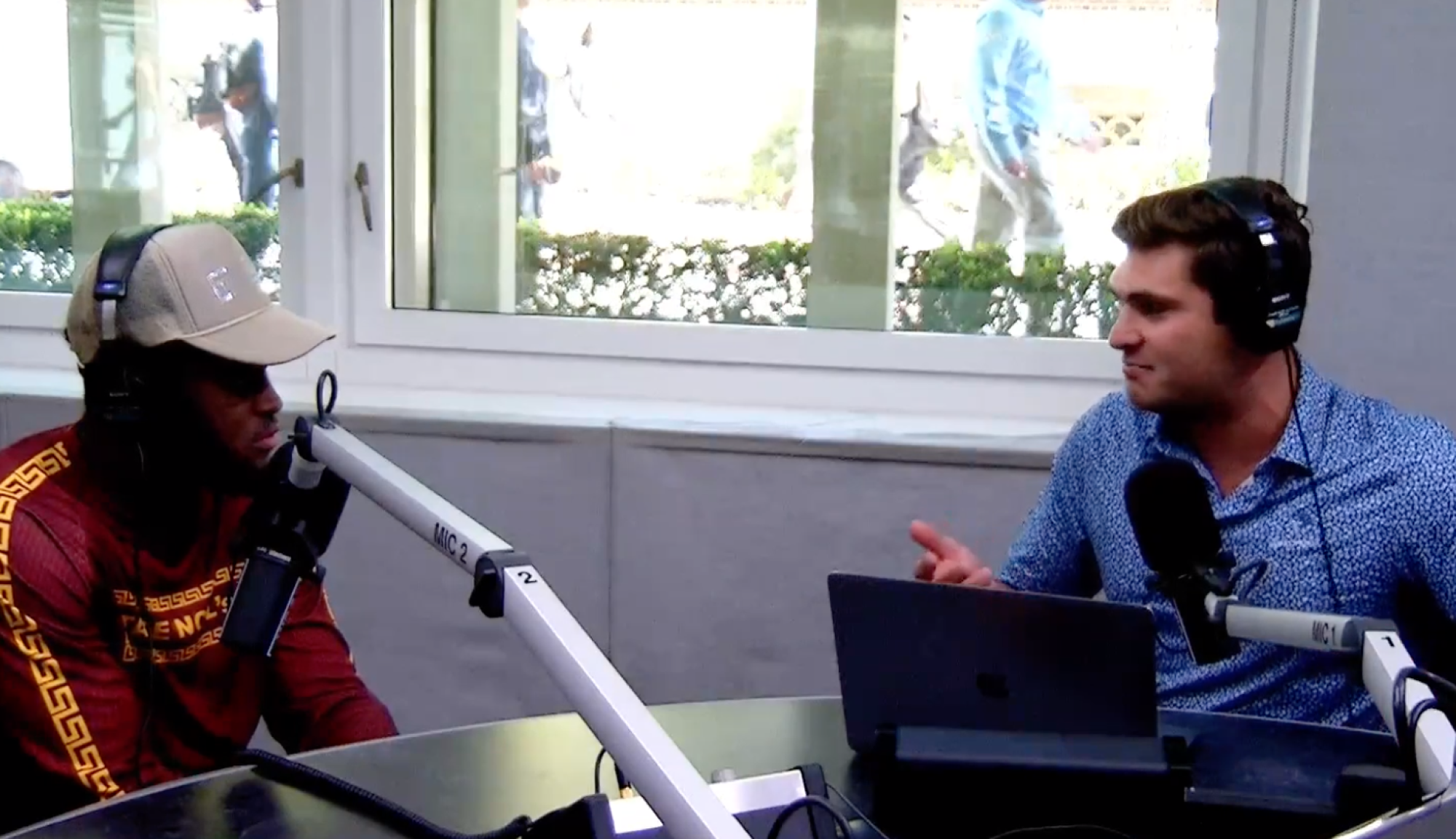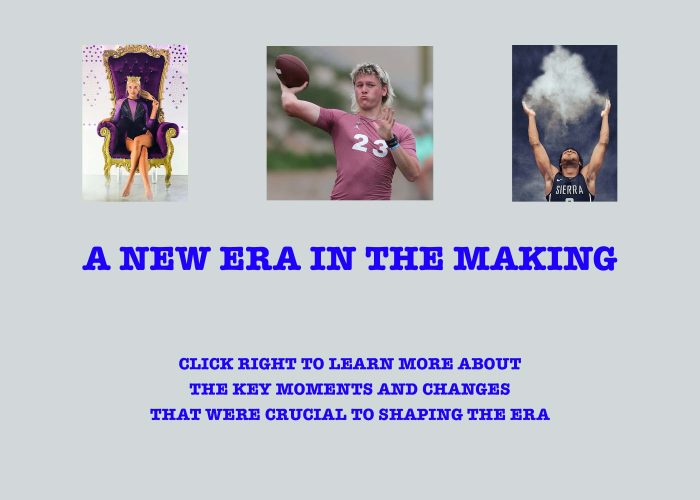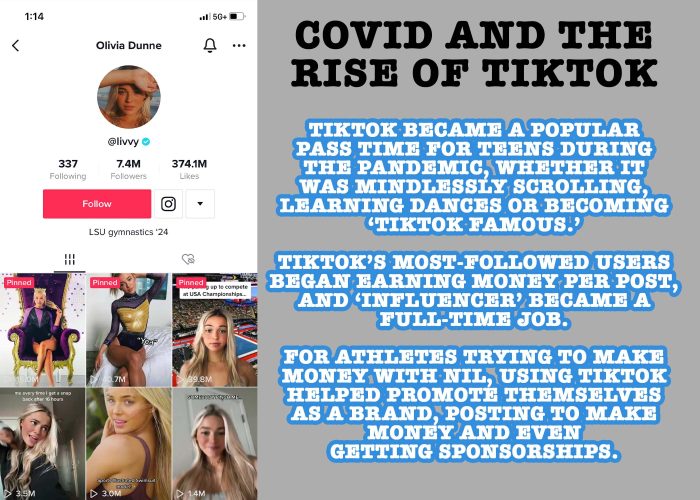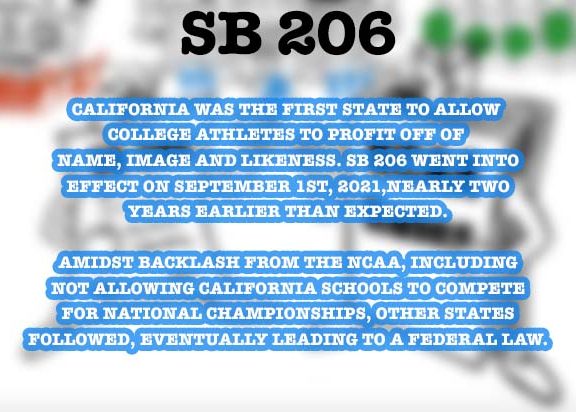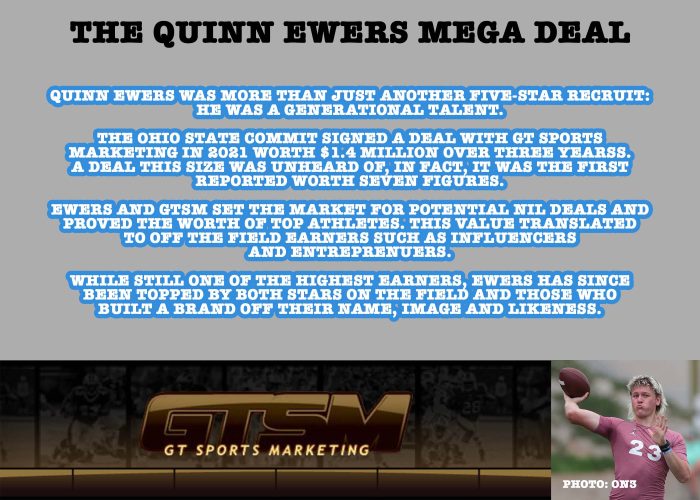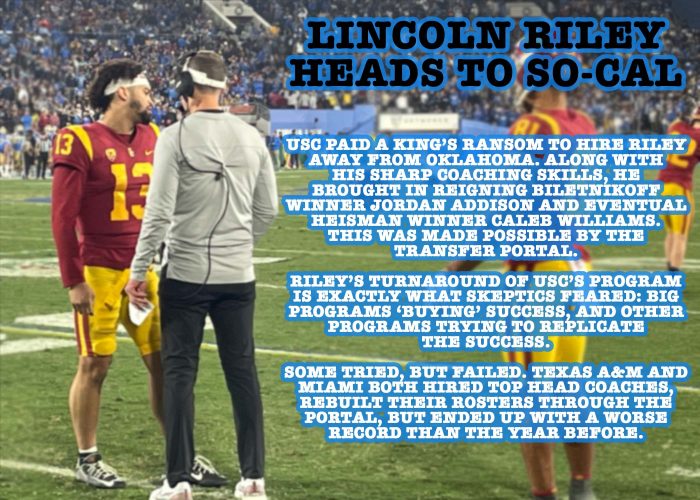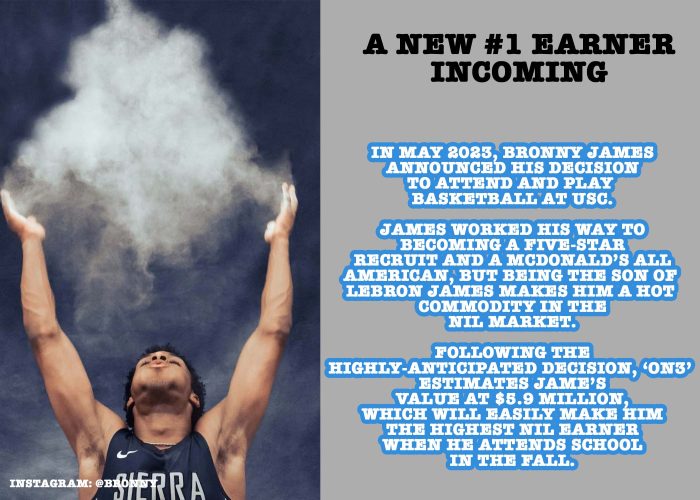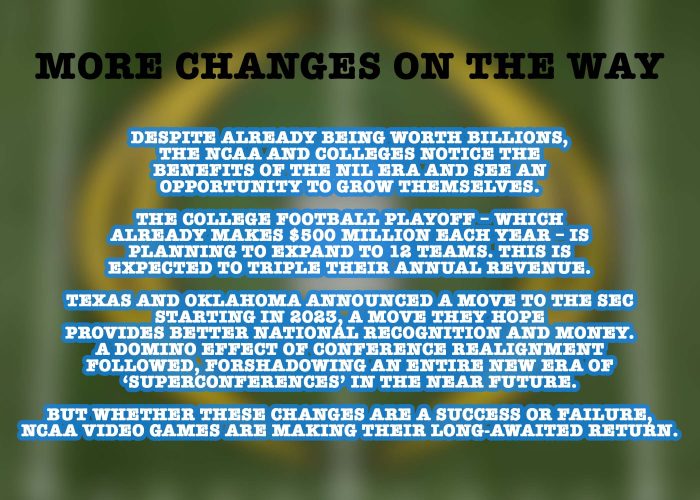HOW A VIDEO GAME SPARKED THE MOVEMENT
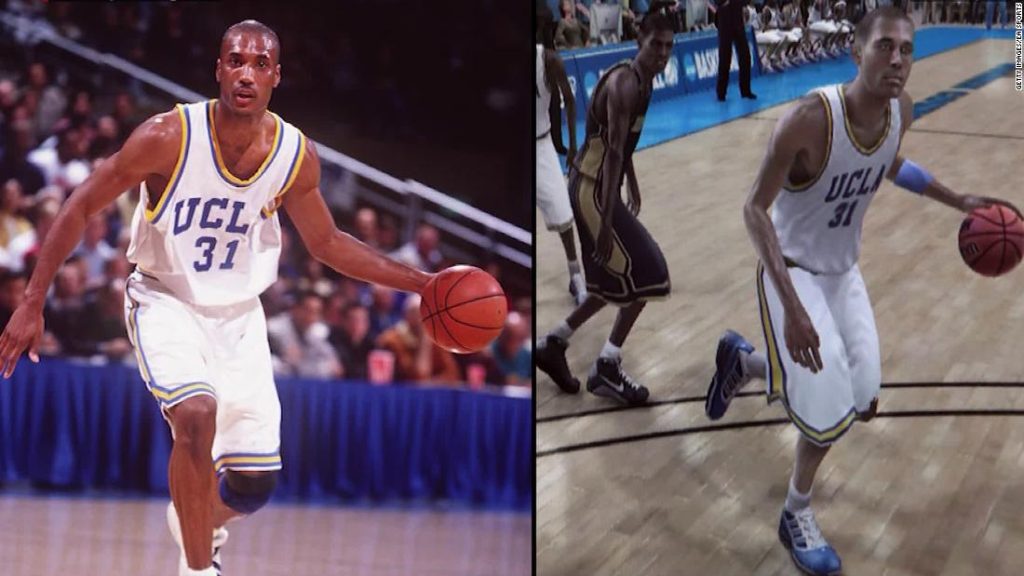
When Ed O’Bannon won a college basketball national championship in 1995, the last thing on his mind was reshaping the NCAA 25 years later. In 2009, he saw a friend’s son playing a video game that featured himself and all of his teammates from 15 years earlier. He then sued the NCAA for the use of his likeness without compensation.
In O’Bannon v. NCAA 2015, Supreme Court unanimously sided with O’Bannon, stating that the use of an athlete’s name, image and likeness without compensation was unlawful. While O’Bannon received compensation to pay off lawyer fees, the more significant outcome was leaving the NCAA with an ultimatum: pay their athletes or protect the amateurism that has defined college athletics for over a century.
The NCAA chose the latter.
The debate over whether college athletes should be paid has been ongoing since before O’Bannon. Jeff Fellenzer, a sports business professor at USC, cites the case of Olympic Skier Jeremy Bloom. The NCAA forced Bloom to give up endorsements from skiing when he chose to play college football for the University of Colorado. He also highlighted the fact that colleges generate millions in revenue from their athletes, yet none of them see a penny outside of a scholarship to attend the school.
Even earning money for deals completely unrelated to sport was denied by the NCAA. In 2017, Donald De La Haye created a YouTube channel called ‘Deestroying,’ where he posted videos while playing football at the University of Central Florida. When he eventually gained fame and the 1,000 subscribers necessary to monetize his videos, he had to decide between a football career or social media stardom. De La Haye ended his dream of playing professional football and pursued YouTube full-time. He was able to finish his degree at UCF while making videos full-time and has since grown his following to over five million subscribers on YouTube.
The NCAA’s stance was clear: College athletes are and always will be amateurs. Or so it seemed.
In 2021, Senate Bill 206 legalized athletes profiting off the use of their name, image and likeness, commonly shortened to NIL. After more than a century of controversy, the ongoing debate was over; college athletes can get paid.
Athletes and experts from different fields of college sports — including business and recruiting — agree this change sparked a new era in college athletics, where athletes are shifted from amateur status to that of a professional. Players are becoming their own brands and can develop the tools necessary to build a post-college career that doesn’t involve going pro. It’s changed the way teams recruit players since they now have the ability to incorporate NIL earnings in their pitches to players. It’s even added a focus to high school sports. A new era is clearly apparent and more changes are coming.
THE ATHLETE = THE BRAND
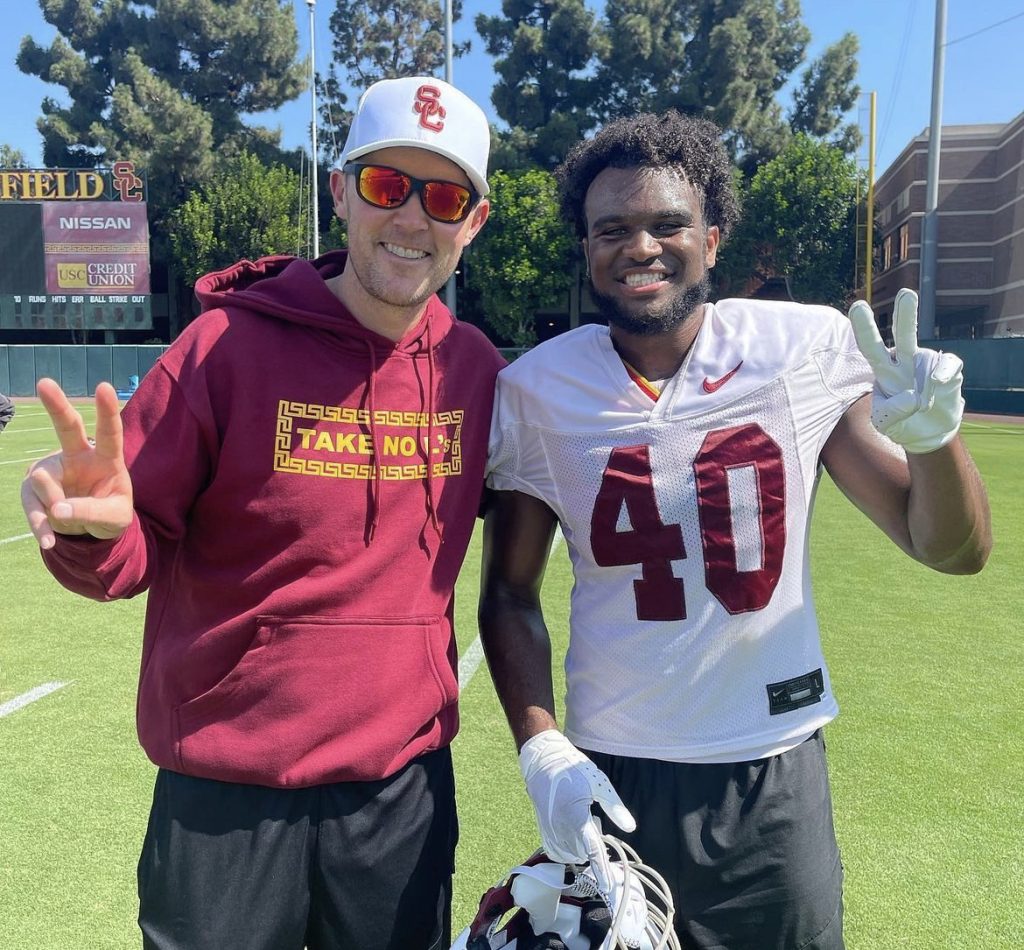
The most talented athletes from football and men’s basketball have already cashed in on huge NIL deals. But athletes don’t have to play the popular sports to make money with the new laws; all it takes is for them to simply be themselves.
L ‘Boogz’ Simpson is a defensive back for the USC football team. ‘Boogz’ is well known on campus and on Instagram with nearly 14,000 followers, but not for his work on the field. He is the founder and CEO of the Take No L’s clothing brand. He has also named himself the brand’s first NIL sponsored athlete.
Simpson believes he’s cracked the code on how to thrive in the NIL era.
“You can’t spell NIL without the L.”
Whether or not it’s a play on words about his name, he’s right — Likeness is referring to an athlete’s visual identity, and the traits that define who they are.
Likeness is more important than talent. The name ‘L Boogz’ is bigger than ‘L Simpson.’ But he realizes that the only way to profit at this stage of the new era is to be a brand instead of an athlete.
Simpson has gotten the opportunity to see many high profile athletes wear his clothing, both college and pro. He’s given hoodies to hip hop artists and celebrities. While some of this can be credited to playing basketball at Sierra Canyon and football at USC, Simpson believes it’s mostly due to his humorous personality and “go after it” attitude.
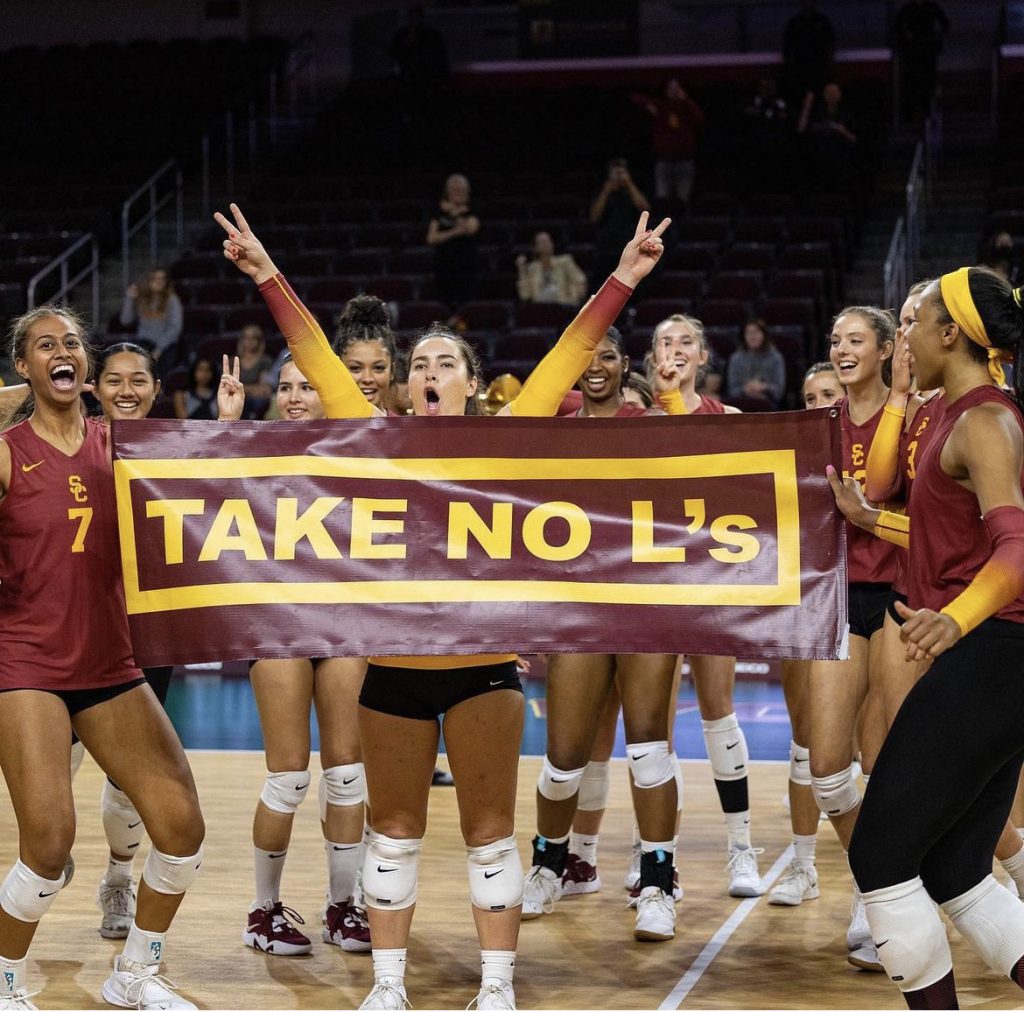
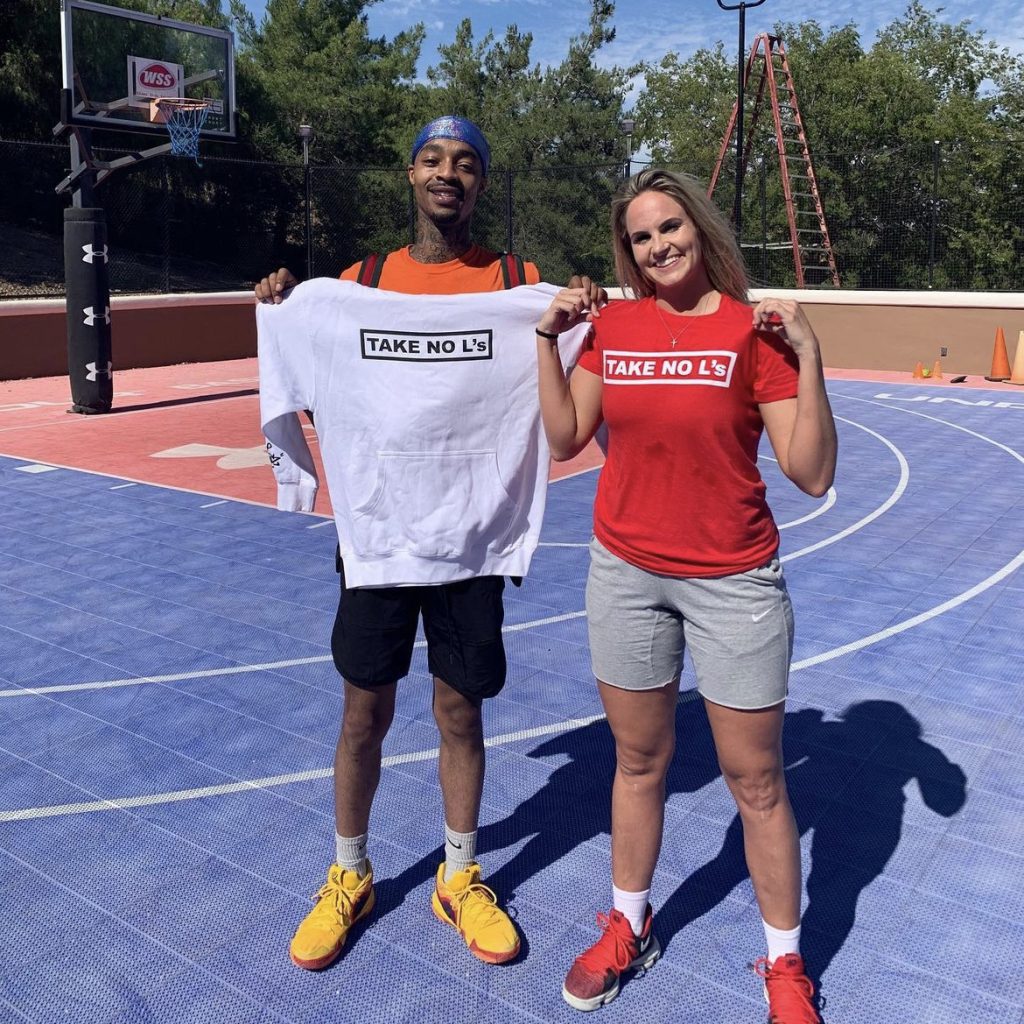
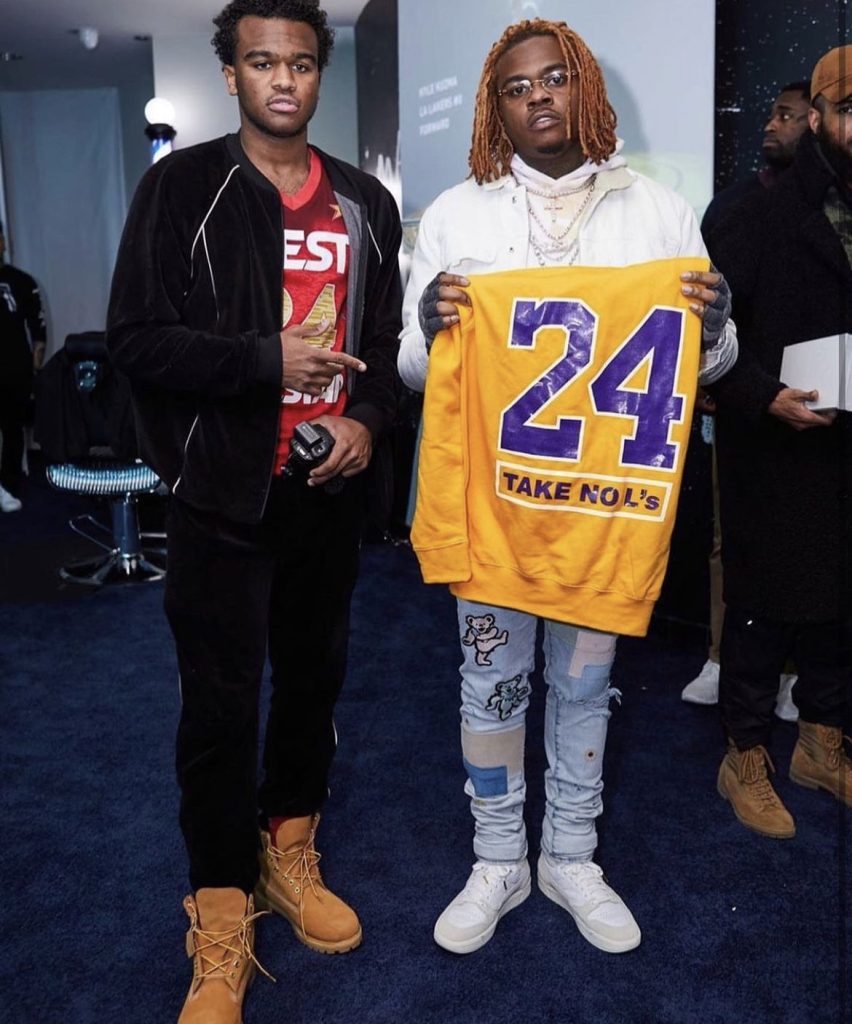
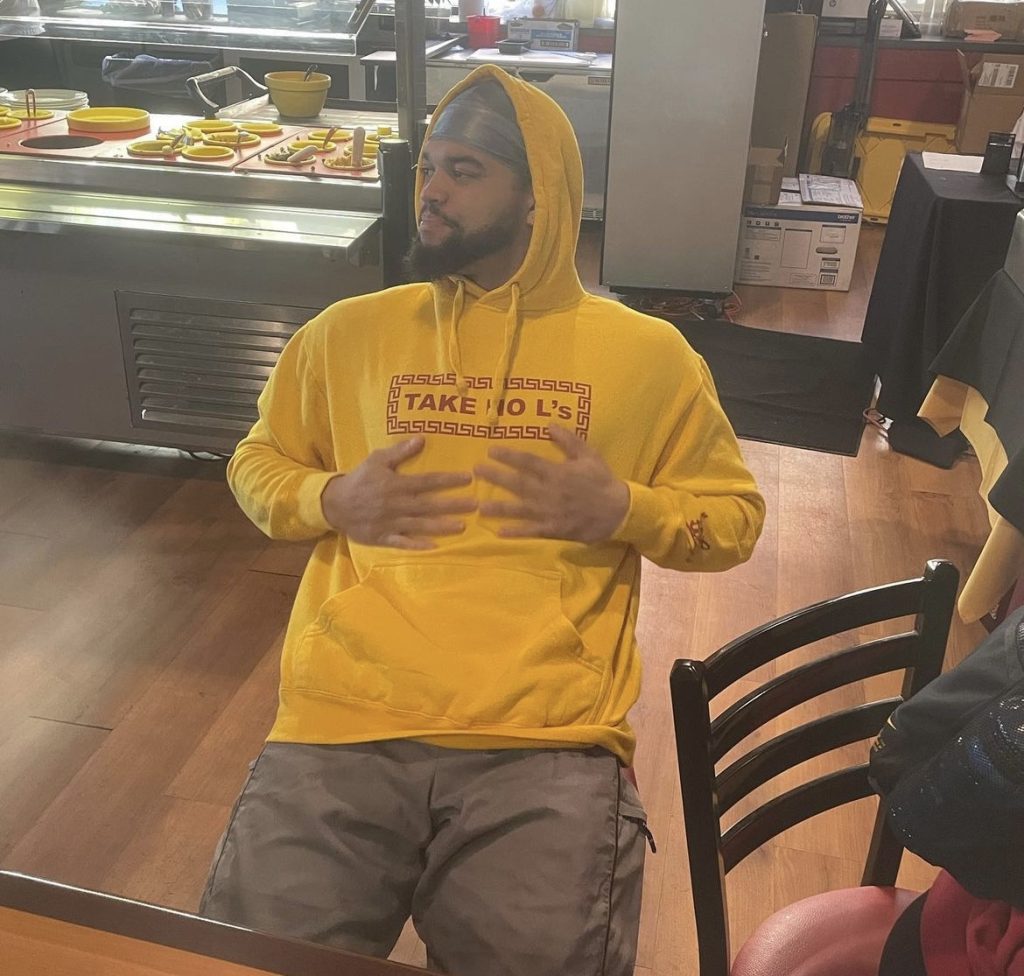
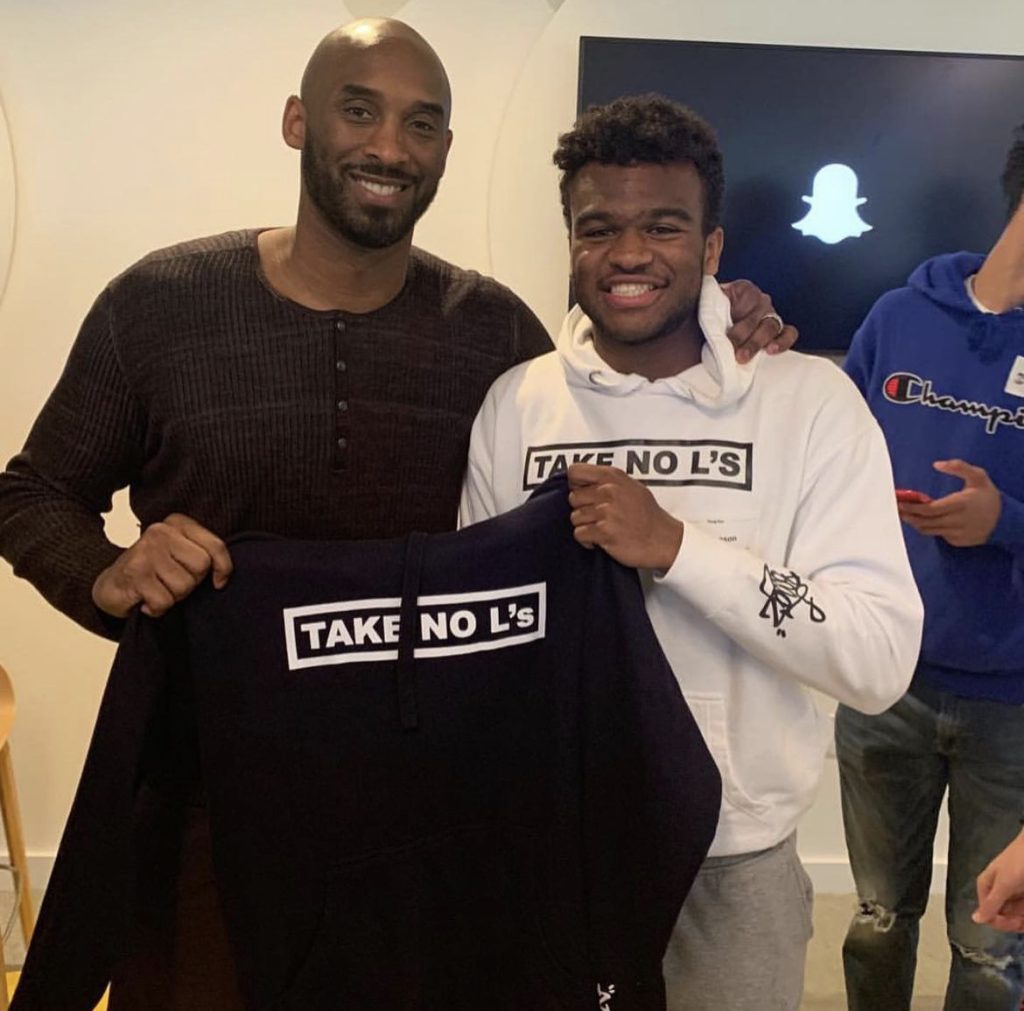
So far, the athletes that have benefited from NIL deals aren’t necessarily the Heisman contenders or the March Madness heroes. It’s the athletes that understand there is no set formula to success and aren’t afraid to get creative.
“With this new format, there is no box of what you can do,” said Simpson, “Jack likes to stay in the box, but I’m not Jack.”
Olivia Dunne is a gymnast at Louisiana State University who’s become one of the top earners of the NIL era so far. Her fame started on TikTok and has grown to all social media platforms, leading to sponsorships with clothing brands such as Vouri and American Eagle. In April 2023, she announced that she would be featured in Sports Illustrated’s Swimsuit Edition.
But whether it’s social media or starting their own business, athletes are set up better than ever for a future that doesn’t involve playing sports. He’ll still be in college for a few more seasons, but Simpson already believes clothing is his future.
“I want to continue to grow my business and get it sponsored,” said Simpson, “but mainly, I just want Take No L’s to be everywhere and apply to everything, not just sports. You might have a final tomorrow, or a job interview and you don’t want to take an ‘L.’ The possibilities are endless.”
HIGH SCHOOLERS ARE THE NEW COLLEGE ATHLETES
The art of amateurism in college sports is officially gone in this new era. In addition to earning money, college athletes have an even bigger influence on their situation now more than ever.
Before 2021, transferring schools was a difficult process that required sitting out a full year before being eligible to play for a new school. The goal was to keep athletes at the same school for four years where they would seek national glory. The only way to get playing time was to work harder and get better, while avoiding injuries. Athletes were students first, and sports were an extracurricular activity.
Now the athlete holds the power over the school and rules have been changed to reflect that. Athletes can now transfer without limits or penalties for doing so, resulting in multiple star athletes switching teams in the offseason in a manner that resembles free agency in professional sports.
The reasons for transferring are numerous, according to Scott Schrader, co-publisher of ‘On3 USC.’ Schrader watched as Lincoln Riley rebuilt USC’s football team with transfers, turning a program that went 4-8 the year before into one that went 11-1 and was in contention to make the College Football Playoff.
Schrader agreed that playing time or playing for a certain head coach might persuade an athlete to transfer, but also stated that there are bigger reasons as well, including NIL.
“There’s several transfers at USC and some on the way saw the NIL opportunities,” he said. “But you also have guys that want to play with Heisman winner Caleb Williams. You can’t just assume they’re coming to USC to get paid, because they’re going to get paid everywhere.”
This resembles ‘ring chasing’ in pro sports, where instead of winning the traditional way, all-stars leave a franchise to team up with each other and form what they hope will be an unbeatable ‘super team.’ College athletes can now put themselves in the best positions to not only win titles, but also win in the NIL market.
This leaves fans of amateur sports with a large void to fill. They enjoyed watching sports where competition is key because athletes are fighting to make a name for themselves and a spot at the next level. The burden has fallen on high school sports. In turn, High profile games are nationally televised and the best athletes are becoming celebrities who can cash in on their own renown.
Three basketball-playing brothers — Lonzo, LiAngelo and LaMelo Ball — revolutionized the high school sports space. The Ball brothers put Chino Hills High School on the map in 2016 with a 35-0 national championship season. A school with no notable basketball alumni managed to build a team with multiple future NBA players that dominated opponents with top prospects and rich NBA history.
Off the court, they became the basketball version of the Kardashians.
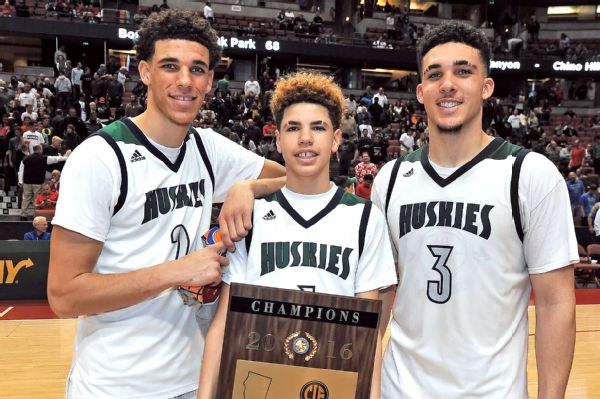
“Seeing the high school that you’re working at on the national news…it was just incredible,” said Ian Trantow, the current Chino Hills Athletic Director. “Even at the games, news trucks came to watch and do interviews. It was a whole spectacle that I’ve never seen before, especially at a high school.”
Because of the Ball family, many new fans began to follow high school athletes. Now, virtually every top prospect has a national presence. ESPN and other top sports media companies cover their games and track their recruiting process. This is the treatment top college athletes have long received before they reached the professional level.
THE FUTURE IS DISRUPTED, NOT DESTROYED
Not everyone is a fan of such changes. Hardcore college sports fans feel the lack of amateurism is ruining the intense competition they’ve enjoyed for over a century.
Some such complaints may just be short term ones as changes get made.
“There’s a difference between disruption and destruction, right now they have to figure out how this will work,” said Fellenzer. “Some people have the point of view that it’s not helping the people that it’s intended to, it’s not helping enough people, but it’s helping some, and isn’t that better than nothing this early on?”
Two athletes with household names added to the disruption in 2023. Bronny James and Arch Manning have yet to set foot in a college classroom, but the second they do, the NIL deals they have lined up will likely make both of them top-three earners in the new era because they’re related to LeBron James and Peyton and Eli Manning.
Fellenzer believes this disruption can show NIL’s potential, especially as rules and guidelines become clearer.
“We’re still writing the rules, so who knows what this will look like in the future,” Fellenzer said, “but I think the basic premise that athletes can capitalize on who they are and what they represent is a solid principle.”
Fellenzer, Schrader and Simpson all agree that one change they’re waiting to see is college athletes earning salaries.
“A friend of mine gave a speech about athletes getting paid for their hard work and labor, and I 100% agree,” said Simpson. “The time and effort we put in, there’s not time to work a 9 to 5 or work another job on the side to make money.”
Regardless of the controversy surrounding this new era, it’s here to stay. While there are some bumps in the road, paying college athletes has only been beneficial and will continue to improve.
